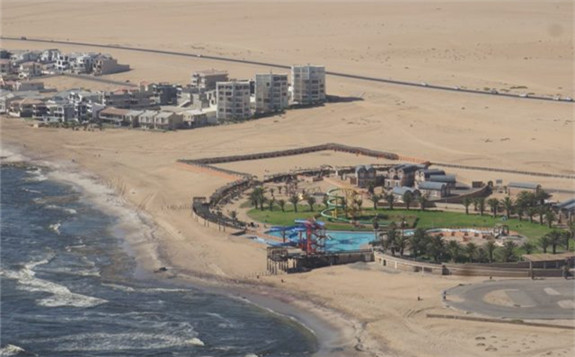Germany and Namibia have signed a Joint Communique of Intent in Windhoek and Berlin to establish a partnership in the field of green hydrogen technology.

The Federal Ministry of Education and Research (BMBF) is providing funding for the identification of suitable sites for green hydrogen production in Africa within the framework of the Atlas of Green Hydrogen Generation Potentials in Africa.
German Federal Research Minister Anja Karliczek said the global race for the best hydrogen technologies and best sites for hydrogen production is on. “We want to take this chance together. The Federal Research Ministry will provide up to €40 million in funding from the economic stimulus package for cooperation within the framework of this partnership.
“Namibia has enormous potential for scaling up a green hydrogen industry. It has a lot of vast unused space. High wind speeds in Namibia mean that the generation of wind power is particularly profitable. Solar power harbours an even greater potential thanks to over 3,500 hours of sunshine per year. This is almost twice as much as Germany has to offer.
“We therefore think that one kilogramme of hydrogen from Namibia will eventually cost between €1.50 and €2. This would be the most competitive price in the world, which would be a huge locational advantage for hydrogen ‘made in Namibia’.”
The Hydrogen Council estimates that hydrogen demand from the German industry, excluding refineries, will amount to 1.7 billion tons a year and this demand will likely grow. “This estimate underlines that we need large amounts of hydrogen and we need it quickly and at low cost. Namibia could provide both,” said Karliczek.
Potential link between hydrogen production and desalination to be explored
The German Federal Research Minister pointed out the latest IPCC report is a stark reminder that the world must pick up speed when it comes to protecting the climate. The countries which will be particularly hard hit by the effects of global warming are those like Namibia which have virtually no carbon emissions.
“Namibia was one of the first countries in Southern Africa to recognise the potential of a green hydrogen industry and will present its own hydrogen strategy in November. Germany will play a central role in its implementation,” said Karliczek.
Dr Stefan Kaufmann, Innovation Commissioner for Green Hydrogen and Member of the Bundestag, said a hydrogen-based economy would be successful if both countries worked together to unlock the potential of hydrogen as an energy carrier. This would help both deliver on the climate goals of the Paris Agreement.
“We are planning to carry out a feasibility study and use its results to implement joint pilot projects and strengthen capacity building for training skilled professionals on the ground. The feasibility study is aimed at exploring the potential of a green hydrogen industry, including innovative seawater desalination technologies in Namibia as well as possibilities of hydrogen export to Germany.
“Based on this study we will use pilot projects to test schemes for green hydrogen production in Namibia and for hydrogen transport We will take into account local needs by placing a particular focus on seawater desalination.
“At the same time, we will also look into the opportunities offered by innovative seawater electrolysis where green hydrogen is generated directly from seawater.
“Exchange programmes for students and experts as well as scholarships for Namibian students will help us to promote the generation and exchange of expert knowledge,” said Kaufmann.
Scaling up internal energy production quickly opens up the way for export from Namibia
Obeth M Kandjoze, the director for generation of the National Planning Commission and chairperson of the Green Hydrogen Council of Namibia, said they are fully aware of the need to start combatting climate change now, rather than in 2030 or 2050.
“Namibia is particularly susceptible to climate change, two thirds of our existing installed generation capacity relies on hydroelectricity, which in turn relies on rain and the flowing rivers at Ruacana. According to the latest labour force survey, 23% of our eligible workers depend on agriculture – prolonged droughts such as the one we recently experienced are a harbinger of catastrophic news for many of our fellow citizens.
“We have resolved to provide funding to feasibility studies and pilot plants that will deploy cutting edge technology to bring us closer to economically viable solutions that will unlock the potential defined by our scientists,” said Kandjoze.
Seawater desalination is at the heart of the German-Namibian cooperation – if the two countries could demonstrate solutions for seawater desalination and hydrogen production under the extreme conditions of the aridest country in sub-Saharan Africa, they can provide a blueprint for other regions and perhaps lay the basis for a global scale-up of the hydrogen economy.
Analysis shows desalination would have a minor effect on the price of hydrogen as it accounts for only 1% of the production cost. Namibia’s low population density and moderate population growth mean they would soon be able to meet the country’s demand for renewable energy should they start producing green hydrogen and thus be able to cross the export threshold relatively fast.